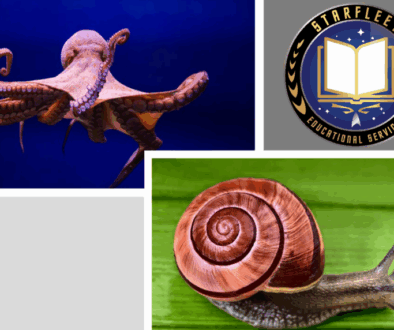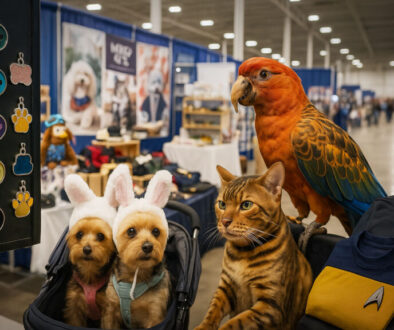What is My Cat Trying To Tell Me?
What is My Cat Trying To Tell Me? By Lieutenant JG JAnet Livingston, Region 3 SFPet Liaison

I’ve never considered myself a cat person. (That has changed a bit after decades of being married to ‘cat-daddy’ David.) Our first indoor cat was accidental. He was a feral who showed up at our place around 2013. He had a severely damaged back leg, which required amputation. The vet discovered during pre-op that the cat had FIV. We opted for the surgery and hoped for the best. I was really hoping to find someone to adopt him but no one seemed interested. With asthma on top of FIV, Tripod was going to have to be an indoor cat, specifically our indoor cat.
I frequently told him how lucky he was that he was a good cat, and he was an absolutely excellent cat! An inoperable abdominal tumor, along with kidney failure, led to the difficult decision to euthanize him in 2020
when pain meds were no longer helping him. The charming photo of Tripod means he wants his belly rubbed (which also includes the giant tumor). I learned to understand cats much better after reading Sarah Brown’s 2023 book The Hidden Language of Cats.
This evidence-based book explores how cats communicate via vocalizations, tail posture, scent, rubbing and gaze. Scent may be the most valuable communication tool for cats. At birth, kittens rely on
scent to locate their mother’s teats. All modern day cats descended from the African Wildcat Felis lybica lybica. Brown discusses the differences between domesticated animals and tame animals. It seems modern day cats may possess a genetic disposition for friendliness towards humans but don’t quite tip the scale to domestication.
About 10,000 years ago humans were learning to farm, and relied less on hunting and gathering. Their permanent settlements, with stores of grain that attracted rodents, lured wildcats to this easy source of prey. The naturally solitary wildcat now needed to learn how to behave and succeed around other wildcats as well as humans. Pee-mail, or the spraying of urine on usually vertical surfaces, worked fine for the solitary wildcat in leaving a scent other wildcats would notice as they passed by. Once wildcats began living closer together they required better signals to indicate their intentions. They developed visual cues like tail postures, the familiar tail held straight up in the air is the offer of friendship. Once friendship was established, rubbing facial glands against one another and mutual grooming developed.
Cats figured out humans were lousy at interpreting the subtle scent marks, and even the visual cues might be missed. Vocalization likely became the primary method of attracting human attention. Eventually, the clever cats settled on a quiet ‘mew,’ a sound not unlike a human infant.
The braver and more curious cats, using this survival of the friendliest approach, would succeed in creating a place for themselves among humans.


